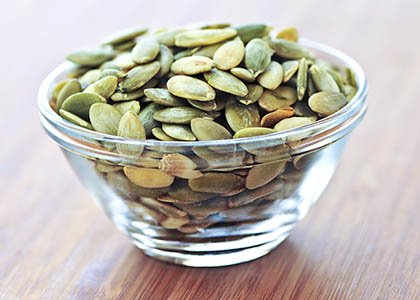
The Important Facts on Healthy Fat
By Isabel Smith, MS, RD, CDN
Omega fatty acids include both essential omega 3 and 6 fatty acids, and non-essential omega 9 fatty acids. The biggest difference between the two is that your body cannot make omega 3 and 6, but it can make omega 9. This means we need to consume omega 3’s and 6’s to get a healthy dose of fats. If you’re wondering why the omegas are getting the limelight more and more lately, I’ve set the record straight to explain everything you need to know about where to consume more, how much, how often, and from what sources.
What are Omega Fatty Acids?
Essential omega fatty acids that include both omega 3 and 6 fatty acids, cannot be made by the human body, and therefore we must consume them. Both omega 3 and 6 fatty acids are members of the polyunsaturated fat family, which means they are both liquid at room temperature; individually and together, they also play important roles in maintaining health.
What is Omega 3 Fatty Acid?
Omega 3 fatty acid comes in two major forms, EPA (eicosapentaenoic acid) and DHA (docosahexaenoic acid); another source of omega 3 fatty acid comes from ALA (alpha linolenic acid) that is found in some plant sources, however, ALA must first be converted to EPA and DHA and the conversion rate is low about 3-6%.
Omega 3 fatty acid plays a key role in many processes in the body including:
- Blood clotting
- Brain development and building cell membranes in the brain
- May offer protective benefits agains`t stroke
- Anti-inflammation
- Heart health – may help to improve triglycerides and may help to boost “good” cholesterol (HDL)
- May be cancer protective
- May benefit autoimmune diseases like lupus and rheumatoid arthritis
- Eye health
- Key during pregnancy
- May help fight wrinkles
What Foods Contain Omega 3’s?
- EPA/DHA: Fatty fish- salmon, mackerel, tuna and from supplements
- ALA: Walnuts, chia seeds, flaxseed, canola oil (always purchase non-GMO/organic), green leafy vegetables including spinach, kale, Brussels sprouts, salad greens
How Much Omega 3 Do You Need?
There are many different recommendations out there for how much to take, however for most 1-2 grams (1000-2000 mg) combined EPA/DHA is reasonable. It’s also always key to check the purity statement and process for the supplement you choose to ensure there is no mercury in the fish oil supplement.
If you’re someone who eats a lot of ALA from plant-based sources (chia seeds, walnuts, flaxseed, etc), the recommendation is that you may not need an extra supplement; however, it is key to remember that the conversion from ALA to EPA and DHA is very low.
What is Omega 6 Fatty Acid?
Omega 6 fatty acids, most of which are consumed through linoleic acid that is converted to gamma linoleic acid (GLA) in the body, is also essential and must be consumed since our bodies cannot make it. Omega 6 is key for health, but when consumed in excess it can be troublesome. The Western Diet is very rich in processed and animal-based sources of omega 6, and is very low in sources of omega 3 fatty acids, that’s where the problem is.
Omega 6, or the form that is used by the body, GLA is key for many processes and may offer health benefits to the body including (note that many of these benefits come from the omega 3/6 combination):
- Heart health
- Anti-inflammation
- Brain health
- Blood sugar control
- May help to improve allergies
- Bone health
- Hormonal control (menopause)
What Foods Contain Omega 6’s?
- Plant oils: Corn oil, soybean oil, sunflower oil, canola oil, hemp oil
- Nuts and seeds: Flaxseed, pumpkin seed, cashews, pecans, pine nuts
- Processed foods
- Whole grains
- Animal products
What’s the key with omega 6 and 3 fatty acids?
The major issue is that many more foods that we eat contain much more omega 6 than omega 3, and therefore many of us are out of balance with our omega 6 to omega 3 ratio. The recommended ratio is 2:1 (omega 6/3), however for most of us who consume the Western Diet, it can be around 15/1. The take home is to focus on getting more sources of omega 3 (both plant and animal-based) into our diets.